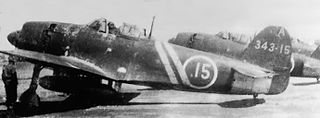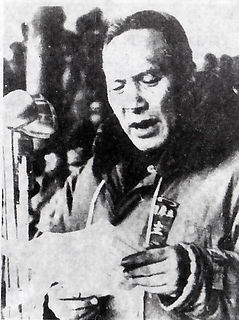Japan
11th Army - Gen. Yasuji Okamura [1,2]
- 6th Division - Lt. Gen. Shiro Inaba [4]
- 9th Infantry Brigade
- 11th Infantry Regiment
- 41st Infantry Regiment
- 21st Infantry Brigade
- 21st Infantry Regiment
- 42nd Infantry Regiment
- 5th Mountain Artillery Regiment
- 5th Cavalry Regiment
- 5th Engineer Regiment
- 5th Transport Regiment
- 9th Infantry Brigade
- 101st Division - Lt. Gen Masatoshi Saito [4]
- 101st Infantry Brigade
- 101st Infantry Regiment
- 149th Infantry Regiment
- 102nd Infantry Brigade
- 103rd Infantry Regiment
- 157th Infantry Regiment
- 101st Field Artillery Regiment
- 101st Cavalry Regiment
- 101st Engineer Regiment
- 101st Transport Regiment
- 101st Infantry Brigade
- 106th Division * - Lt. Gen. Atsuo Matsuura [4]
- 111th Infantry Brigade
- 113th Infantry Regiment
- 147th Infantry Regiment
- 136th Infantry Brigade
- 125th Infantry Regiment
- 145th Infantry Regiment
- 106th Field Artillery Regiment
- 106th Cavalry Regiment
- 106th Engineer Regiment
- 106th Transport Regiment
- 111th Infantry Brigade
- Ishii Tank Unit - Col. Ishii [5]
- 5th Tank Battalion - Colonel Ishii
- 7th Tank Battalion - Lieut. Colonel Kusunose
- 7th Independent Tankette Company - Captain Yamada
- [All the armored units together comprised 76 Type 89 medium tanks and 59 Type 94 tankettes]
- 2nd Battalion of 147th Infantry Regiment /106th Div. [6]
- 1st Company of 3rd Independent Engineer Regiment[6]
- 1 Platoon of 8th Divisional Transport Unit[6]
- 120th Cavalry Regiment - Seinji Hasekawa[1]
- 22nd Artillery Regt. - Houkichi Nakahira[1]
- 6th Field Heavy Artillery Brigade HQ - Major Gen. Sumita[3]
- 13th Field Heavy Artillery Regiment [15 cm howitzers] Lt. Col. Okoshi[3]
- 14th Field Heavy Artillery Regiment [15 cm howitzers] Lt. Col. Maruyama[3]
- 10th Field Heavy Artillery Regiment [15 cm howitzers] Lt. Col. Nagaya[3]
- 15th Independent Field Heavy Artillery Regiment [10 cm cannons] Col. Horikawa[3]
- 101st Field Artillery Regiment [75mm field guns] Lt. Col. Yamada[3]
- 3rd Independent Mountain Gun Regiment [75mm mountain guns] Lt. Col. Morikawa[3]
- 106th Field Artillery Regiment [75mm field guns] Lt. Col. Uga[3]
- 2nd Battalion/2nd Independent Mountain Gun Regiment [75mm mountain guns] Major Matsumoto[3]
Naval:T Operation Fleet - Rear Admiral Keijiro Goga [6]
- Main unit
- 1st Base Force
- Asuka
- Advanced unit
- Hira
- Futami
- Rear Guard
- Kotaka
- 2nd Gunboat Unit
- 3rd Gunboat Unit
- Advanced Guard
- 1st Minesweeper Unit and other small craftIncluding the Sumiyoshi Maru and the Hayase
- Kure 5th SNLF
- 4th Gunboat Unit
Naval Airforce:
- Air Unit [6,7]
- River Plane Unit of 1st Base Force
- aircraft ?
- 12th Air Unit Kōkūtai
- Fighter daitai - ? Mitsubishi A5M
- Bomber daitai - ? Yokosuka B3Y1
- River Plane Unit of 1st Base Force

A Kōkūtai (航空隊) was a term used by the Imperial Japanese Navy Air Service (IJNAS) to designate a military aviation unit, similar to the Air Groups in other air arms and services of the time. A Kōkūtai could be based at land or on board aircraft carriers and could contain up to hundreds of men and aircraft. For example, the famous 343 Kōkūtai was a land based fighter group while the 652nd Kōkūtai was a carrier-based bomber group. Kōkūtai were divided into smaller units called Hikōtai, which were the equivalent of a squadron. Kōkūtai were usually divided into three Hikōtai. In general, most pilots and aircrew in the Imperial Japanese Navy Air Service were non-commissioned officers. The word Kōkūtai is abbreviated with the abbreviation "Ku". 343 Ku, for example, stands for 343 Kōkūtai. In the Imperial Japanese Army Air Service (IJAAS) the equivalent unit was the Sentai.
Army Airforce:3rd Flight Group - Major Gen. Sugawara [6,7]
- Independent 17th Flying Squadron [17th Dokuritsu Hiko Chutai] - cdr ?, base: Central China
- ? Aircraft type, Reconnaissance squadron
- 45th Flying Sentai - cdr ?, base: Central China
- ? Aircraft type, Light bomber unit
- 75th Flying Sentai - cdr ?, base: Central China
- ? Aircraft type, Light bomber unit
- 77th Flying Sentai - cdr ?, base: Wuchang
- ? Kawasaki Ki-10 Fighter

The Kawasaki Ki-10 was the last biplane fighter used by the Imperial Japanese Army, entering service in 1935. Built by Kawasaki Kōkūki Kōgyō K.K. for the Imperial Japanese Army, it saw combat service in Manchukuo and in North China during the early stages of the Second Sino-Japanese War. Its reporting name given by the Allies was "Perry".
Notes:
- 9th Division in Yueh-Linhsiang area. [1]
- 3rd, 13th, 116th Divisions North of Yangtze River vs. Chinese 5th War Area forces. [1]
- Only a portion of the 106th Division took part. [1]
- T Operation Fleet had over 30 ships and 50 motor boats and one battalion of Marines [1]



